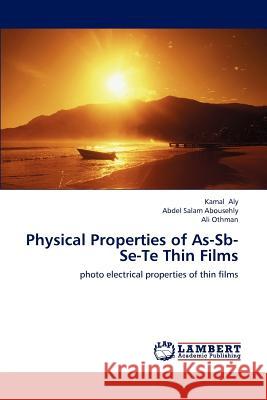Physical Properties of As-Sb-Se-Te Thin Films » książka
Physical Properties of As-Sb-Se-Te Thin Films
ISBN-13: 9783659160547 / Angielski / Miękka / 2012 / 188 str.
Amorphous chalcogenide glasses have great interesting due to their wide range of applications such as solar cells, photo detectors, photo diodes, imagining and xerography. As-Sb-Se-Te thin films were prepared by thermal evaporation method. The addition of Te content were found to affect the optical, electrical and photo electrical properties. The influence of incorporation of Te in (As-Sb-Se-Te) system results in an increase of the bulk density and molar volume while the coordination number, the average heat of atomization and cohesive energy decrease. The effect of Te content on the steady state and the transient photoconductivity in vacuum evaporated amorphous thin films of As-Sb-Se-Te were studied. The composition dependence of the steady state photoconductivity at room temperature shows that, the photoconductivity increases while the photosensitivity decreases with the increase in Te content. The transient photoconductivity shows that the carrier lifetime decreases with increasing the light intensity. This decrease suggests that the photoconductivity mechanism in our samples was controlled by the transition trapping processes.
Amorphous chalcogenide glasses have great interesting due to their wide range of applications such as solar cells, photo detectors, photo diodes, imagining and xerography. As-Sb-Se-Te thin films were prepared by thermal evaporation method. The addition of Te content were found to affect the optical, electrical and photo electrical properties. The influence of incorporation of Te in (As-Sb-Se-Te) system results in an increase of the bulk density and molar volume while the coordination number, the average heat of atomization and cohesive energy decrease. The effect of Te content on the steady state and the transient photoconductivity in vacuum evaporated amorphous thin films of As-Sb-Se-Te were studied. The composition dependence of the steady state photoconductivity at room temperature shows that, the photoconductivity increases while the photosensitivity decreases with the increase in Te content. The transient photoconductivity shows that the carrier lifetime decreases with increasing the light intensity. This decrease suggests that the photoconductivity mechanism in our samples was controlled by the transition trapping processes.











